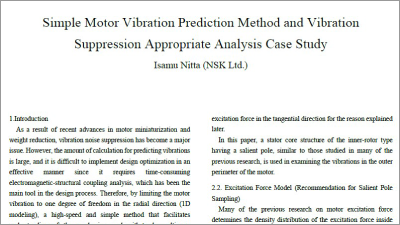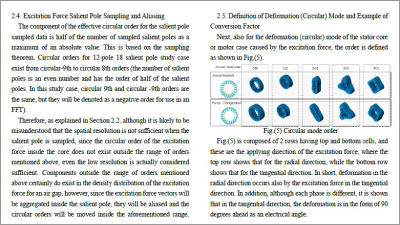Isamu Nitta
Technology Research and Development Office3, Core Technology R&D Center,
NSK Ltd.
Abstract
In recent years, as motors have become smaller and lighter, suppression of vibration noise has become a major issue. However, the amount of calculation required for vibration prediction is large, and the current mainstream magnetic field-structure coupled analysis takes time, making effective design optimization difficult. Therefore, by limiting the motor vibration to one degree of freedom in the radial direction (1D), it is possible to easily understand the mechanism, and a high-speed simple method that can be used for multi-case calculations for design optimization is being studied. As an example of this, an overview of the simple method VMFS, in which the excitation force acting on a single salient pole is obtained by magnetic field analysis, and the vibration value is obtained based on this, is presented. This section introduces an analysis example of vibration suppression.


You need to sign in as a Regular JMAG Software User (paid user) or JMAG WEB MEMBER (free membership).
By registering as a JMAG WEB MEMBER, you can browse technical materials and other member-only contents for free.
If you are not registered, click the “Create an Account” button.
Create an Account Sign in




